15 Amazing Chinese Language Facts For Kids
What are the interesting facts about the Chinese language? The Chinese language is known for its complexity, requiring learners to master its unique grammatical structures and intuitive nuances in depth.
To effectively understand and communicate in Chinese, one must go beyond textbook learning and master deeper intuitions. Imagine if you could speak Chinese—you would have the opportunity to communicate with over a billion people around the world!
Whether you intend to learn Chinese or are simply fascinated by this ancient language, in this article let’s explore some fun, interesting, and amazing facts about the Chinese language.
Learn authentic Chinese from those who live and breathe the culture.
Specially tailored for kids aged 3-18 around the world!
Get started free!
15 Facts and Fantasies about the Chinese Language That You Probably Didn’t Know!
Learning a language is learning a culture. This is true whether you are planning to travel abroad or study overseas. At its core, the Chinese language is rich in cultural heritage, reflecting the insights of a powerful and innovative culture. And here are some fascinating Chinese language facts for kids.
1. Chinese is one of the oldest languages that is still in use today.
Chinese is one of the world’s oldest languages. Chinese characters first appeared in 1250 BC, more than 3,000 years ago! Over about 3,000 years, the ancient Mandarin Chinese gradually evolved into the modern Chinese language we know today.
As for its written form, the oldest evidence we have dates back to 1250 BC. These writings were engraved in animal bones and tortoise shells as part of a divination ritual called “oracle bone script”. Oracle bone writing is considered the earliest form of traditional forms of Chinese calligraphy.
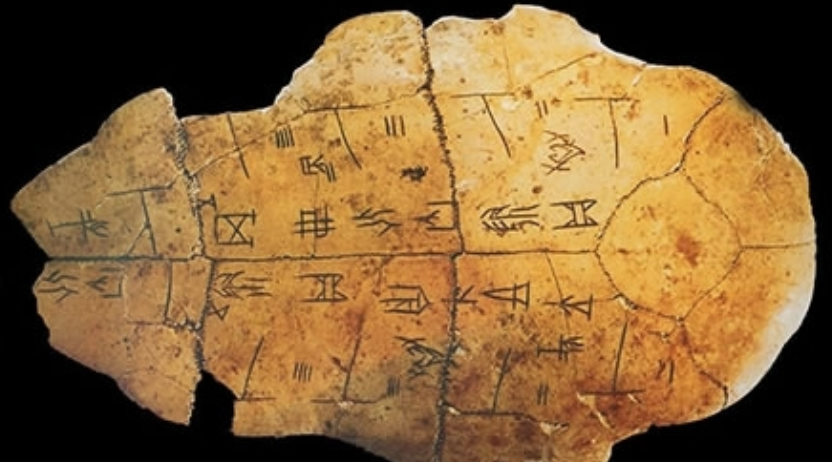
2. Chinese is the most widely spoken language in the world.
It is incredible but true that about 20% of the world’s population speaks some form of Chinese language, like Cantonese, Sino-Tibetan languages, Min dialect, and Mandarin Chinese. Mandarin alone is spoken by more than 1 billion people! According to some sources, English is also spoken by about 1 billion people around the world, but not necessarily all of them are native speakers. This means that if you take English as your native language and learn to speak Mandarin (or vice versa), you can make over 2 billion friends!
More than 1.3 billion people speak Chinese. This means that one out of every six people speaks Chinese, and 15% of the world’s population has Chinese as their first language. Even Spanish, English, French, and German combined don’t reach this number.

3. Chinese has hundreds of dialects.
Mandarin is the most widely spoken Chinese language. It is also the official language of mainland China and is used in other regions such as Hong Kong and Taiwan. But, mandarin isn’t the only “Chinese language”. Moreover, other forms of Chinese are also spoken in China, such as Wu, Xiang, Cantonese, Min, Hakka, and Gan.
In addition, when people talk about “speaking Chinese” they usually mean Mandarin. Mandarin is also the most spoken language in China, but there are several other language families and Chinese dialects. Mandarin dominates Southwest, North, and East China, while Cantonese is popular in Guangdong and Guangxi provinces and Hong Kong. If you stay in South China, you may also hear Wu and Gan dialects.
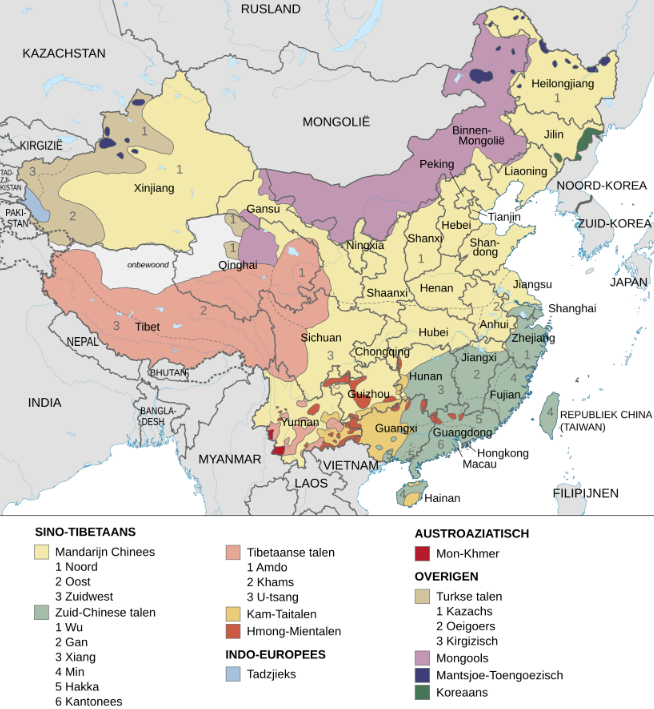
Although these are different spoken languages, they share a writing system known as “hànzì汉字”. Nonetheless, speakers of Mandarin prefer to use simplified characters when writing, while speakers of Cantonese usually prefer traditional characters.
4. Chinese is the only modern pictographic language.
Like the ancient Egyptian hieroglyphics, Chinese is also a pictographic script. It is the only existing hieroglyphic script in the world today. The Chinese language uses images or pictures to represent the subject they are meant to describe.
A pictographic language allows people to communicate via pictograms. The content of a “sentence” typically would include a sequence of standardized pictures (pictograms, icons,…). The earliest systems can be found in the Neolithic period.
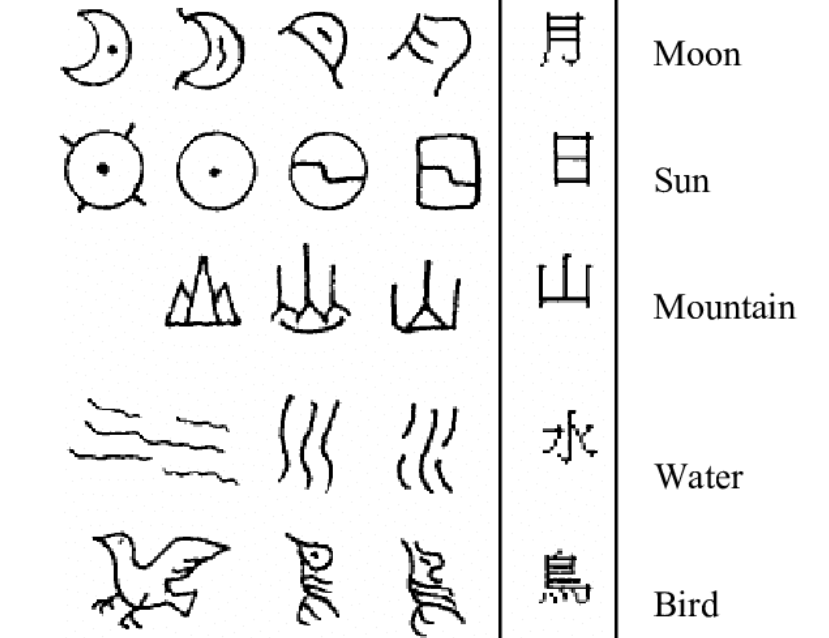
5. There are well over 50,000 different Chinese characters.
The Chinese language consists of more than 50,000 characters. Some Chinese dictionaries even say it is much more than 50,000. And some believe there may be as many as 100,000.
Chinese characters are symbols used to represent words and ideas. Chinese speakers must choose the appropriate characters, not memorize the alphabet. Does this mean that everyone has more than 50,000 characters memorized in their heads? The Chinese government compiled a list of the most important characters needed to communicate and ended up with only 3,500 characters. And 2,500 characters make up about 97% of daily communication.

6. The Chinese language doesn’t have an alphabet.
First, the origin of Chinese writing dates back thousands of years and is closely related to ancient Chinese culture and philosophy. The development of the writing system was influenced by historical and cultural factors, unlike the alphabetic system.
Second, Chinese does not use an alphabet like many Western languages because it relies on the logographic written language, where Chinese script represents words or graphemes rather than individual sounds. Although Chinese does not have an alphabet, it uses a phonetic system such as Pinyin to represent sounds. The pinyin system is commonly used to teach pronunciation and typing but is not a writing system in its own right. Each complicated Chinese character usually corresponds to a specific meaning, so the Chinese writing system conveys concepts more than sounds.
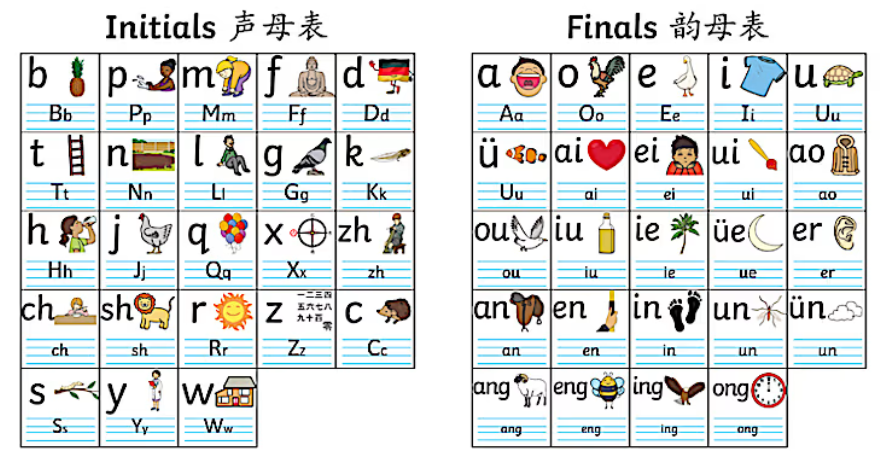
In addition, Chinese is a tonal language, which means that the pitch or tone used in pronunciation can change the meaning of Chinese words. The alphabetic system may have difficulty capturing such nuances compared to Chinese characters, which represent entire concepts.
To sum up, the Chinese writing system reflects unique linguistic, cultural, and historical aspects that distinguish it from alphabet-based systems.
7. Chinese is a tonal language.
What is a tonal language? It refers to the ability to express meaning not just through pronunciation, but also through intonation! Changing the tones can completely change the meaning of the Chinese words. Mandarin Chinese has four different tones (five if you count neutral tones). So how do you represent tones in writing? Different words are represented by different characters.
- First tone: higher pitch.
- Second tone: from low to high.
- Third tone: Starts with a neutral tone, gradually gets lower, and finally gets higher.
- Fourth tone: starts slightly higher in pitch, then goes strongly downward.
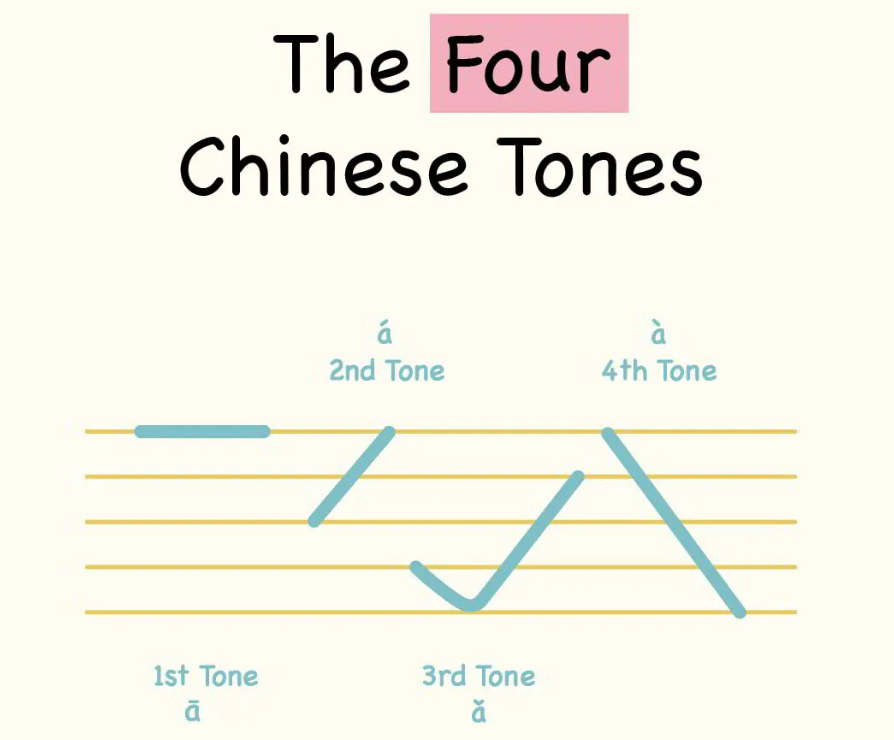
Many people say there is also a “fifth” or “neutral” tone. It is a slight sound without any particular upward or downward turn.
Different dialects and languages in China (e.g. Cantonese) have more tones! The following examples illustrate how a word can have completely different meanings at different tones:
- Flat tone. Example: mā (妈, mother)
- Rising tone. Example: má (麻, fiber)
- Falling and rising tones. Example: mǎ (马, horse)
- Falling tone. Example: mà (骂, scold)
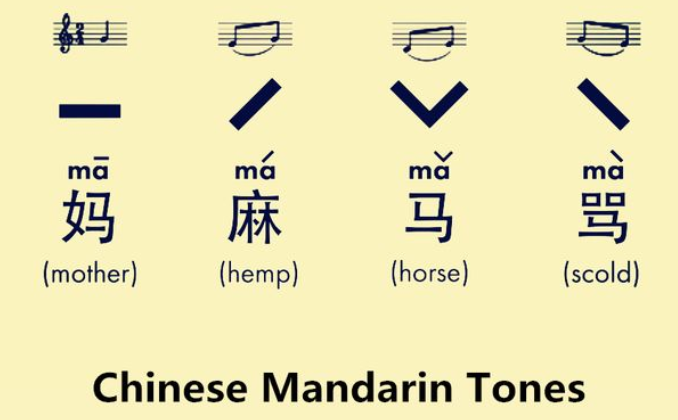
8. Gender usage in Chinese is different from many other languages.
Whether you write or speak Chinese, there are no masculine, feminine, or neutral words. One of the hardest parts of learning a new language is understanding the concept of the “gender” of words. Is a tree masculine, feminine, or neutral? After all, English doesn’t assign gender to flowers at all. But unlike German, Spanish, French, and many other foreign languages, neither does Chinese. This means that English speakers may find it easier in some ways to learn Chinese grammar.
Compared to English, Chinese goes much further in its lack of gendered words. There are also no gendered pronouns in the written form of the Chinese language. You only need to learn one word: “tā”, instead of using words like “he” and “she”.

9. It could be the simplest language in the world.
A very interesting fact about Chinese is that it is challenging but not a difficult language to learn!
Contrary to popular belief, Chinese is not difficult to learn. Yes, it is challenging, but once you master pinyin (the Chinese pinyin alphabet or word spelling), tones and understand the meaning behind the characters, you can learn it very quickly.
With no gender, plurals, verb conjugation, or even traditional punctuation, Chinese has a unique grammatical structure compared to many other languages. Without hieroglyphics, it would probably be the simplest language in the world!
10. Chinese is an UN official language.
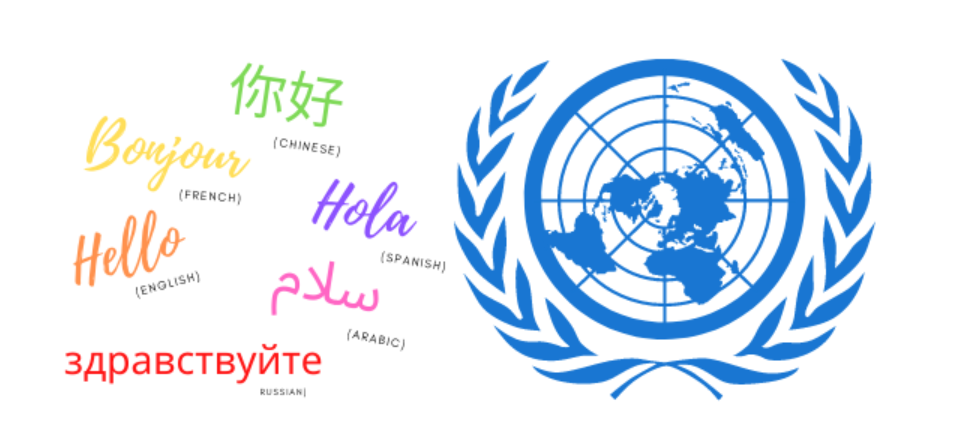
Chinese was made an official language of the United Nations in 1946 but was not used in the United Nations General Assembly until 1973. The six official languages of the United Nations are: Chinese, English, Arabic, French, Russian, and Spanish.
11. There are two sets of Chinese characters.
Chinese characters are divided into two categories: the first is simplified Chinese characters and the second is traditional characters. Simplified Chinese characters are modern Chinese characters created in the mid-20th century. Traditional Chinese characters are those that have been in use since ancient China.
Most people in mainland China use simplified characters. In some regions, such as Hong Kong, Macau, and Taiwan, most people use traditional Chinese characters, while Chinese communities in other countries tend to use traditional characters more often.
12. Chinese is a very popular language among celebrities.
It’s no secret that Mandarin Chinese is a pretty big deal not only in Asia but all over the world. More and more celebrities are choosing to learn Chinese, for example, Mark Zuckerberg gave a speech in Chinese at Peking University, Prince William wished a Happy New Year in Chinese during an interview and Elon Musk posted a tweet in Chinese on his Twitter of “The Quatrain Seven Steps” by Cao Zhi, a famous scholar of the Three Kingdoms period in ancient China.

13. Mandarin didn’t always read left-to-right.
The history of written Chinese dates back to the Shang Dynasty, 1200-1050 BC. Until 1955, Chinese was written vertically from right to left. Since then, the People’s Republic of China has changed written Chinese to be written horizontally from left to right.
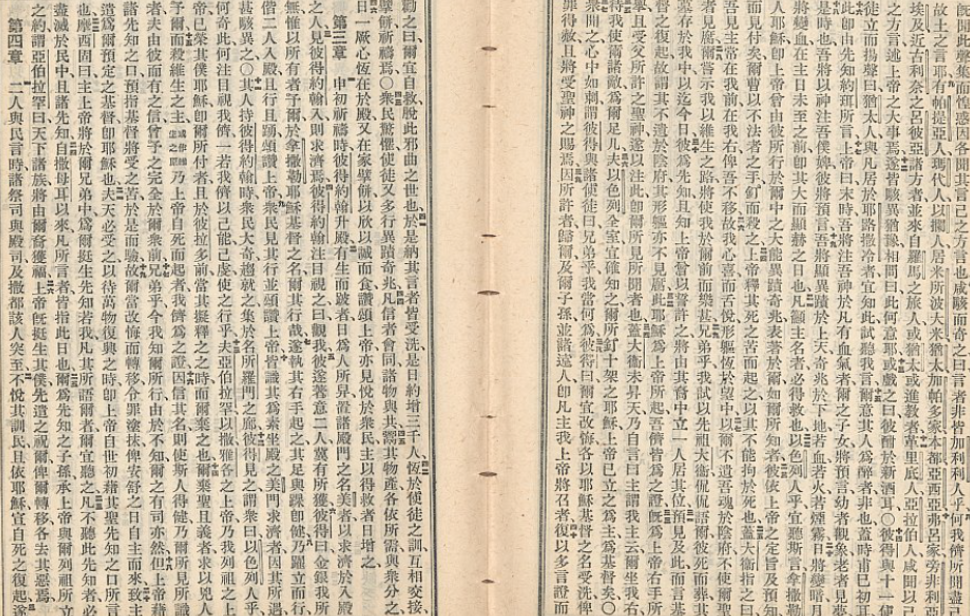
14. Chinese is one of the major languages in numerous Southeast Asian countries.
More than 40 million Chinese live in other Southeast Asia. This means that the Chinese language is also widely used in countries such as Singapore, Indonesia, Vietnam, and Malaysia, especially in Singapore and Malaysia.
15. Learning Chinese can also help you grow in other ways.
Learning any language positively affects the brain, and learning Chinese has its unique benefits.
Familiarizing with tonal language can improve your hearing and make you better at music. Chinese characters can improve your motor control and even help you become a better artist. Some experts even believe that learning Chinese could help people understand math concepts more easily.
Learning Chinese is one of the best ways to exercise your brain as you get older. It sharpens the brain by activating the left and right hemispheres of the brain to differentiate between words. Studies have shown that people who can speak and write Chinese characters have greater cognitive abilities.
5 Fun Facts about China
China is a vast country with rich natural and cultural resources. It has a long history of 5,000 years. In addition to the amazing facts about the Chinese language introduced above, let’s learn some interesting facts about China!
- The Chinese New Year celebration lasts for 15 days.
- Put together, all of China’s railways lines could loop around earth twice!
- The mortar used to bind the Great Wall’s stones was made with sticky rice!
- The Chinese white dolphins, which live off southern China, are often pink.
- China is about the same size as the continental USA but it only has one official time zone. Continental USA has four.
FAQs on Chinese Language Facts For Kids
1) What are the facts about Chinese culture?
- China is made up of 56 ethnic groups: China is a vast country with a population of over 1.4 billion people, which is made up of 56 official ethnic groups. This includes the largest Han group which makes up over 92% of the population, or around 1.3 billion people. The smallest ethnic group in China is the Tatar, which numbers around 4,000 people.
- Celebrations usually follow the Chinese lunar calendar: The Chinese lunar calendar is a lunisolar calendar that encompasses solar and lunar cycles that influence key social and religious celebrations in China. In modern times, the Gregorian calendar is used for civil purposes in China, such as in business and making appointments. However, when it comes to festivals and traditions, the Chinese lunar calendar takes precedence. Key dates in the Chinese lunar calendar include Chinese New Year (Spring Festival), Mid-Autumn Festival, Lantern Festival, etc.
- Everybody has a Chinese Zodiac animal: Do you know your Chinese Zodiac animal? The story and legend of the mythical animals that descended from heaven to celebrate the coming of spring is infamous to anybody with an interest in Chinese culture. The Chinese New Year animals change each year on a 12-year cycle. Upcoming animals in the Chinese Zodiac include Snake (2025), Horse (2026), Sheep (2027), and Monkey (2028).
2) What are the facts about ancient Chinese artwork?
Traditional Chinese art has varied due to changes in times and due to changes in dynasties. Important religious figures have also played a role in the development of Chinese art.
In fact, even the political leaders who have ruled over China have influenced on Chinese art. Of all the Chinese artworks, the most demonstrative are Bronze Vessels, Folk Toys, Calligraphy, Poetry, Cloisonne, Painting, Silk, Lacquer, Porcelain, Terracotta Army, Seals, Opera, and Shadow puppetry. These works not only reflect the culture of China but also the talent which Chinese people possess. Here are some ancient Chinese art facts for kids:
- Chinese art dates back over 10,000 years.
- Calligraphy is a respected Chinese art form.
- Jade was highly prized in ancient China.
- Dragons are a common motif in Chinese art.
- Scrolls were often used for painting.
- Buddhism greatly influenced Chinese art styles.
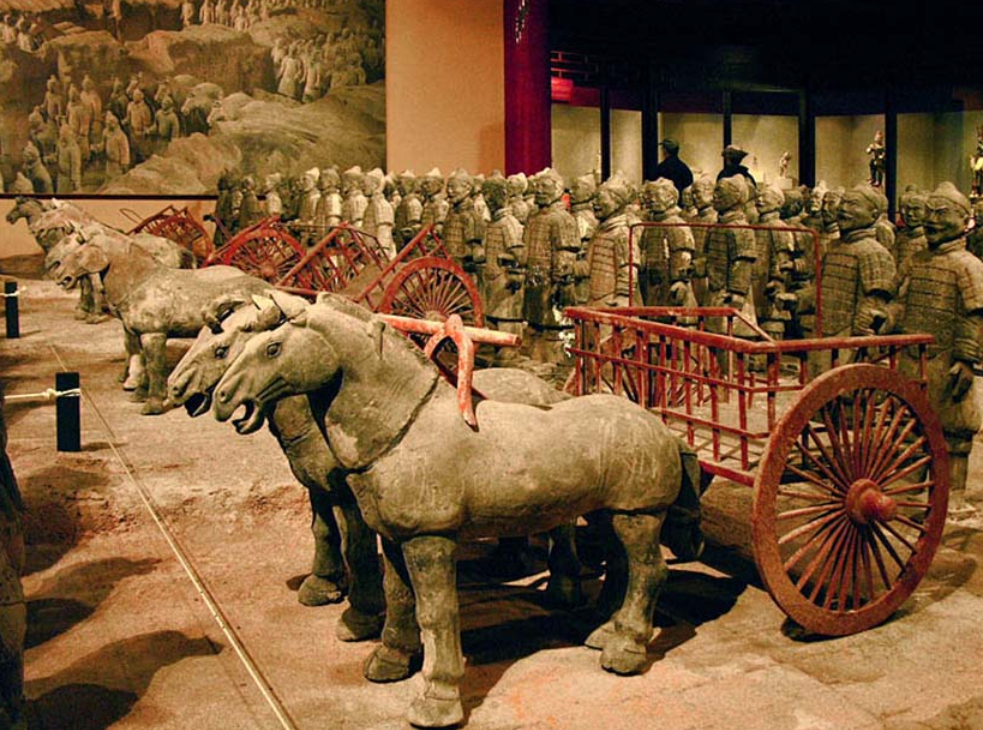
3) What are some facts about ancient China?
- Ancient China had a bronze age.
- Many Chinese coins were carried on strings
- Most men in the Forbidden City were eunuchs.
- Chinese Correctly Learned Human Anatomy ~1400 Years Before Europeans.
- Female Peasants Developed a “Women’s Script.”
Summary
As we present many interesting facts about the Chinese language, culture, and art in this article, it becomes clear that Chinese has many fascinating features. From its large character count and its status as a tonal language to its use of numerical codes and influence outside of China, Chinese exhibits a complexity and richness that few languages can match.
Whether you are drawn to the depth of Chinese history, its linguistic challenges, or its impact on global communication, understanding these aspects of Chinese highlights why it remains one of the most fascinating languages to study and explore!
Learn authentic Chinese from those who live and breathe the culture.
Specially tailored for kids aged 3-18 around the world!
Get started free!
Master’s degree from Yangzhou University. Possessing 10 years of experience in K-12 Chinese language teaching and research, with over 10 published papers in teh field of language and literature. Currently responsible for teh research and production of “WuKong Chinese” major courses, particularly focusing on teh course’s interest, expansiveness, and its impact on students’ thinking development. She also dedicated to helping children acquire a stronger foundation in Chinese language learning, including Chinese characters, phonetics (pinyin), vocabulary, idioms, classic stories, and Chinese culture. Our Chinese language courses for academic advancement aim to provide children with a wealth of noledge and a deeper understanding of Chinese language skills.




![20+ Chinese Curse Words Explained: Common Swear Words [with Pinyin & Meanings] 20+ Chinese Curse Words Explained: Common Swear Words [with Pinyin & Meanings]](https://wp-more.wukongedu.net/blog/wp-content/uploads/2025/03/image-353-520x293.png)






![7 Best Books about Learning Mandarin Chinese for Kids [2025] 7 Best Books about Learning Mandarin Chinese for Kids [2025]](https://wp-more.wukongedu.net/blog/wp-content/uploads/2025/01/9522fcccb9c6cea0772dbed9df4020111ee13be709c05f572e35a0fccd5ad850-520x293.jpg)








![Exploring Chinese Writing: History, Structure, & Tips [2025] Exploring Chinese Writing: History, Structure, & Tips [2025]](https://wp-more.wukongedu.net/blog/wp-content/uploads/2024/05/image-267-520x293.png)

![What is Pinyin? Best Way To Learn Pinyin For Beginners [2025] What is Pinyin? Best Way To Learn Pinyin For Beginners [2025]](https://wp-more.wukongedu.net/blog/wp-content/uploads/2024/04/image-12-520x293.png)

![A Complete Guide to Chinese Name Pronunciation Tool [2025 Updated] A Complete Guide to Chinese Name Pronunciation Tool [2025 Updated]](https://wp-more.wukongedu.net/blog/wp-content/uploads/2024/01/image-202-520x293.jpeg)



Comments0
Comments